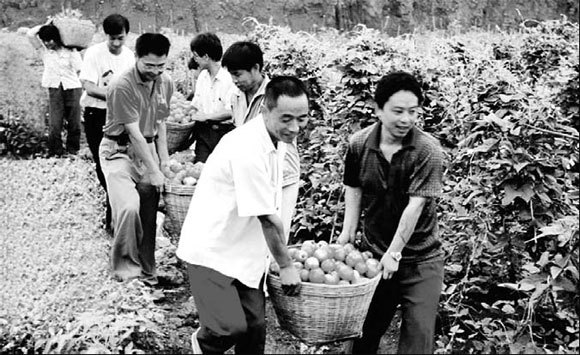At Chinalco's Aurukun bauxite mining construction site in Queensland, Australia, the future partially rests on the number of turtles that have crawled across the area in a select period of time.

Chinalco's alumina mining areas in south China's Guangxi Zhuang Autonomous Region were converted back to farmland and reaped a good harvest of tomato, with an improved soil fertility and enlarged plant covering.
The endangered turtles are a crucial part of the Chinese company's AUS$3 billion (US$2.58 billion) project environmental assessment test.
The Aurukun bauxite project is the largest investment by a Chinese company in Australia but if the number of turtles decreases after several months of monitoring, the deal could be off.
Aluminum Corporation of China (Chinalco), a global non-ferrous metal heavyweight made headlines last year for its blockbuster overseas acquisitions. It has pledged to environmental protection and energy conservation at home and abroad.
The turtle census is only one part of the environmental report card. It will take two years to conduct the full comprehensive test to see whether Chinalco's mining plan will damage the environment and affect its ecological balance and diversity.
"If we are there, we have a commitment to the local community, so we should take a responsible stance for local environment protection," says Lu Yongqing, vice-president of Chinalco, the nation's largest aluminum and alumina maker.
Last year when state-owned Chinalco signed the agreement with the government of Queensland, Australia, to develop the bauxite mining project, some Australian activists challenged the project's environmental impact, arguing that China is seeking to transfer a high-pollution industry overseas.
In response, Lu gave a speech titled "Green growth in Harmony" at an Australian mining club clarifying how Chinalco, as well as China, is committed to emission controls and environmental protection. Lu says his speech was warmly received.
"Our overseas projects will not bring pollution to the local environment, but will instead contribute to the development of the local economy," Lu says.
Bauxite is refined into alumina, which is smelted into aluminum.
China has become the world's largest aluminum products maker and consumer, but China's bauxite resources only account for 2 percent of the world total.
China's imported bauxite accounts for one-third of the country's total reserves, according to Chinalco.
The green mining blueprint was first practiced in Chinalco's Guangxi mines, where the mined-out areas were restored into farmland.
By far, about 93 percent of Chinalco's mines across the nation have been turned into farmland, and its soil fertility and vegetation cover ration go higher than the level before development, the company says.
Chinalco vowed to reduce the emission of sulphur dioxide by 10 percent in the 11th Five-Year Plan period (2006-10), and cut energy consumption, and water consumption of the industrial added value by 20 percent and 30 percent respectively.
Thanks to the new technologies, Chinalco's energy consumption is falling. In 2007, power use for alumina per ton dropped by 21 percent, while that of aluminum per ton fell by 3 percent, Ao Hong, vice-president of Chinalco says.
It has also developed a process that improves the utilization efficiency of the ore to reduce energy consumption by 41.7 percent and save standard coal consumption by 689,000 tons annually.
Chinalco is currently constructing a 200,000-ton-per-year secondary aluminum plant in Qingdao. The plant will save 2.8 billion kW-hours of power and 2 million tons of water compared to what's required to traditionally produce the same amount of primary aluminum.
By 2008, Chinalco plans to reach the goal of "zero waste-water discharge from its facilities", with over 200 million yuan invested to upgrade its water recycling system, says Ao.
Last year, above 80 percent of Chinalco's alumina producers reduced their sewage discharges, a move that resulted in a reduction of 33.77 million tons of industrial sewage discharged annually.
"Now, some of our plants are no longer discharging wastewater. What's more, some of our plants can treat more water than they discharge," says Xiao Yaqing, president of Chinalco.
In 2007, Chinalco posted an annual rise of 8.8 percent in alumina output; 20.7 percent in raw aluminum and aluminum alloy output; and 27.4 percent in aluminum materials output, according to a company statement.
Chinalco has also signed an agreement in November to build and operate a US$3 billion aluminum smelter at Jazan Economic City (JEC), Saudi Arabia.
The low electricity tariff in JEC will lower the plant's energy consuming costs, says Chalco.
Energy costs an average of US$20 per megawatt-hour in the Middle East, compared with US$28 in the United States and US$40 in China for the same measure, according to Fitch, an international rating agency.
A related 1,860MW power plant will also be built costing an estimated US$2 billion. That will eventually form part of a power-generating complex serving the whole city with total output exceeding 5,000MW.

(China Daily April 8, 2008)